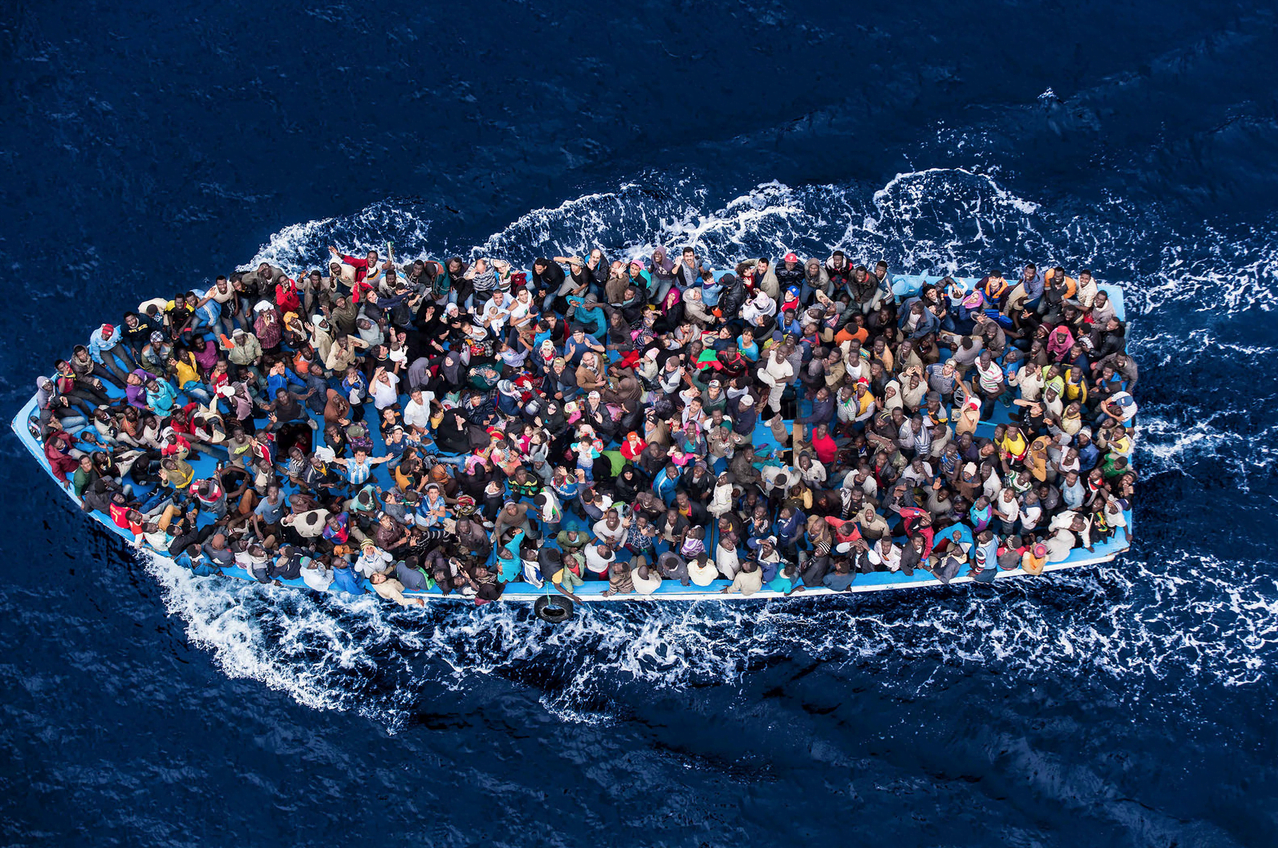According to the International Organization for Migration, for at least the third year in a row the Mediterranean represents the most deadly migratory route in the world. With three main methods of crossing the Mediterranean – the western route to Spain, the central route to France, Italy, and Malta, and the well known eastern route to Greece and Cyprus – known deaths in the Mediterranean account for almost 75 percent of global migrant deaths.


European politicians name this staggering total as one of the reasons why the EU needs to do a better job of deterring migration across the Mediterranean. The controversial EU-Turkey deal is one part of this policy of deterrence, and the policy has succeeded is drastically lowering the number of refugees and migrants crossing from Turkey to Greece. But as border controls on the eastern route to Europe tightened, refugees did not stop their attempts to reach Europe, but rather shifted to the more dangerous – and deadly – central route to Italy.
The risk of drowning is ten times higher on the central Mediterranean route versus crossing from Turkey to Greece.
Because of this shift back to the central route and the growing trend of boats leaving from Egypt instead of Libya and Tunisia, the number of those rescued and killed on the journey has skyrocketed in recent months. Despite almost 10,000 people being rescued over two days at the end of last month, UNHCR estimates 2016 to be the deadliest year on record for the central Mediterranean route, with 1 in every 42 migrants who attempt the journey dying. However as with all figures related to sea migration, this is based on known deaths and not those who are never recovered.


However, rather than address these numbers, the EU appears set to go ahead with its current focus on deterrence. The Economist estimated at the beginning of 2016 that Europe would soon have more physical barriers along its borders than it did during the height of the Cold War, all geared towards stopping the movement of refugees and migrants into the Schengen area rather than reducing the number of people attempting to cross the Mediterranean. This prevents entry into many European countries, but is also responsible for the severe backlog of refugees in border states such as Italy and Greece.
As a result, much like it did with Turkey the EU is now entering deals with other border states such as Morocco and Libya to make those spots a final destination rather than a transit point. The EU is also contemplating deals with major migrant producing states and chronic human rights abusers like Sudan, Somalia, Eritrea and Afghanistan. Following news of the possible incentive deals, crackdowns against migrants were reported in Sudan and Eritrea earlier this year.
Thus, deterrence policies are often less about saving lives and more about keeping them out. A recent Oxfam report found that the six richest countries in the world – the US, China, Japan, Germany, France and the UK – host less than 9 percent of the global refugee population while developing countries host 86 percent of the total. While these six countries also contributed nearly $2 billion in aid to UNHCR last year, the bulk of the burden of international migration and the global refugee crisis continues to fall on those least able to afford it. Meanwhile those developed countries that could afford to do more are instead investing in ways block even more refugees and migrants from entering.
This disparity – between who can afford to ignore international responsibilities and turn migrants away versus who is expected to take on the burden – is a key element blocking an internationally comprehensive approach to the refugee crisis.
When the same rules do not apply to everyone equally, finding common ground becomes increasingly difficult. New measures announced by Lebanon to crackdown on refugees, Kenya’s ongoing attempt to close the largest refugee camp in the world, and an apparent push by Turkey to create a border zone for refugees are just some of the outcomes.
Next week the UN General Assembly will convene the first-ever high level summit on refugees and migration. The focus of the summit goes beyond the Syrian refugee crisis, but in many ways the current situation in the Mediterranean is at the heart of this global emergency and the political failings that have led us here. So far, the draft declaration for the summit offers platitudes and vague commitments, but nothing substantive to fix a broken process.
The summit offers an opportunity to finally address the political failings that have created these migration flows and remodel an outdated refugee system. But whether the international community is willing to take that gamble when some of its most powerful members are content to shut its’ doors remains to be seen.
******
In a recent Global Dispatches podcast episode, Oxfam’s Shannon Scribner details the ways in which the international community is attempting to confront the global refugee and migration crisis, and how they are falling short.
